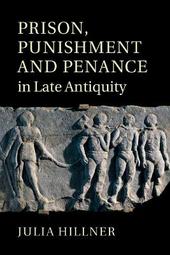
|
Prison, Punishment and Penance in Late Antiquity
Paperback / softback
Main Details
| Title |
Prison, Punishment and Penance in Late Antiquity
|
| Authors and Contributors |
By (author) Julia Hillner
|
| Physical Properties |
| Format:Paperback / softback | | Pages:442 | | Dimensions(mm): Height 229,Width 151 |
|
| Category/Genre | World history |
|---|
| ISBN/Barcode |
9781009296410
|
| Classifications | Dewey:364.60937 |
|---|
| Audience | | Tertiary Education (US: College) | | Professional & Vocational | |
|---|
| Illustrations |
Worked examples or Exercises; Printed music items; 4 Tables, black and white; 3 Maps; 4 Halftones, color; 3 Line drawings, black and white
|
|
Publishing Details |
| Publisher |
Cambridge University Press
|
| Imprint |
Cambridge University Press
|
| Publication Date |
15 September 2022 |
| Publication Country |
United Kingdom
|
Description
This book traces the long-term genesis of the sixth-century Roman legal penalty of forced monastic penance. The late antique evidence on this penal institution runs counter to a scholarly consensus that Roman legal principle did not acknowledge the use of corrective punitive confinement. Dr Hillner argues that forced monastic penance was a product of a late Roman penal landscape that was more complex than previous models of Roman punishment have allowed. She focuses on invigoration of classical normative discourses around punishment as education through Christian concepts of penance, on social uses of corrective confinement that can be found in a vast range of public and private scenarios and spaces, as well as on a literary Christian tradition that gave the experience of punitive imprisonment a new meaning. The book makes an important contribution to recent debates about the interplay between penal strategies and penal practices in the late Roman world.
Author Biography
Julia Hillner is Senior Lecturer in Medieval History at the University of Sheffield. She is co-editor, with Kate Cooper, of Religion, Dynasty, and Patronage in Early Christian Rome, 300-900 (2007).
Reviews'... Julia Hillner's inviting style allows the reader to come to her own conclusions with guided direction. Even if one does not always agree with some of the arguments put forth, all the evidence is provided for you, which is an invaluable feature of this book. Finally, due to the vast amount of topics discussed by the author, readers will inevitably be inspired to pick up new threads for further discovery. This book is a wonderful contribution to the field and comes highly recommended.' Jennifer Barry, Bryn Mawr Classical Review
|